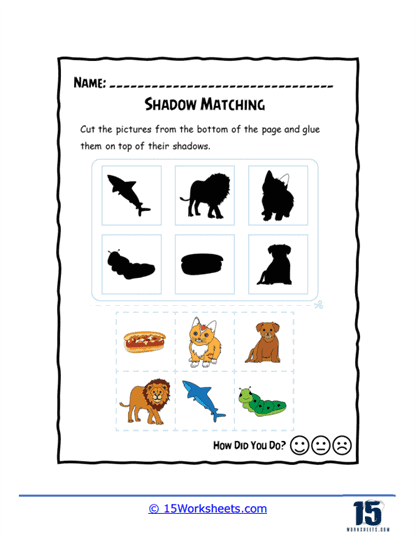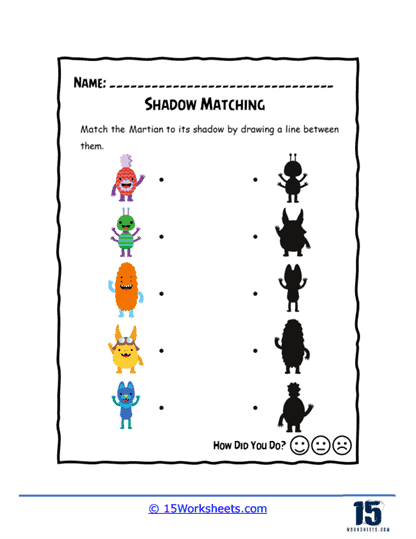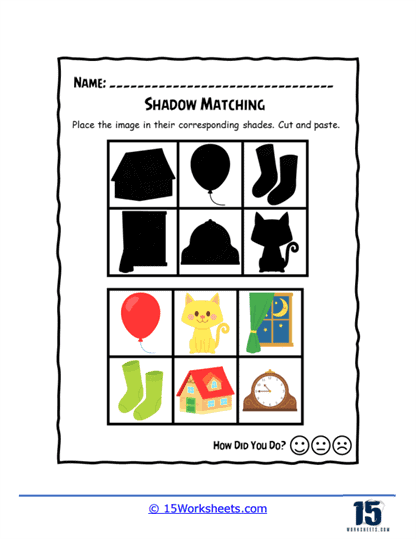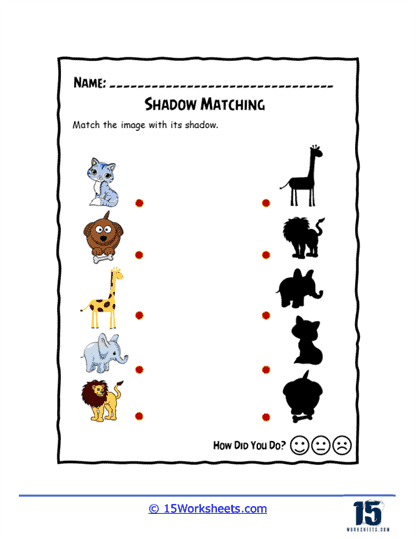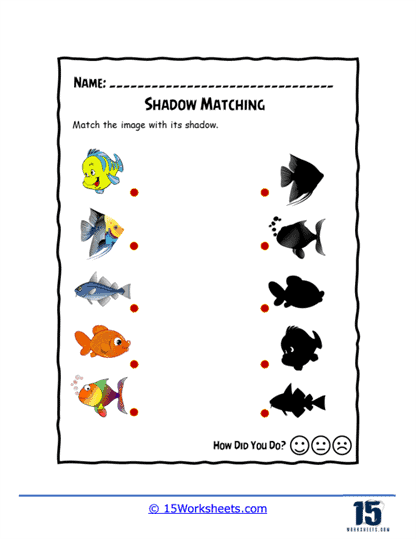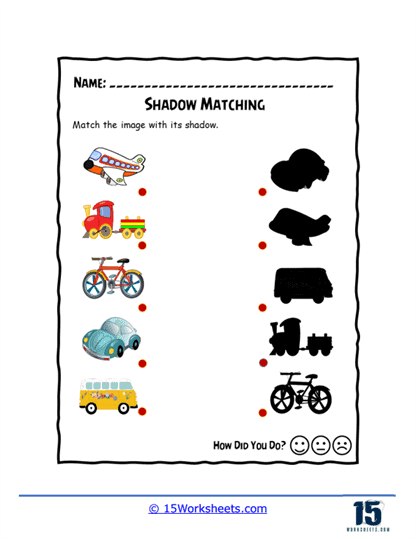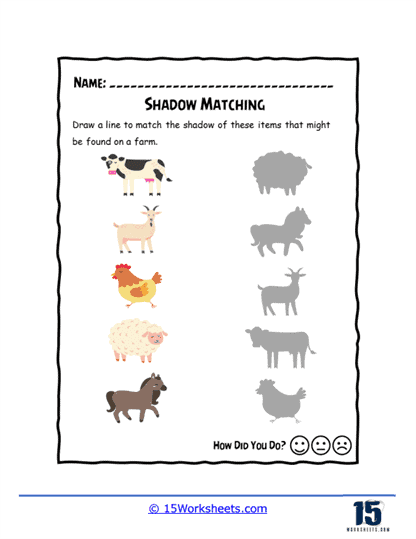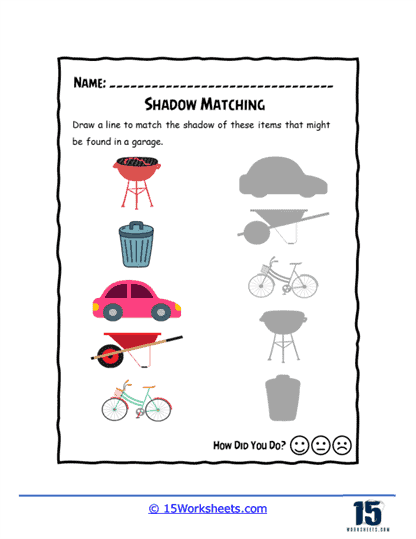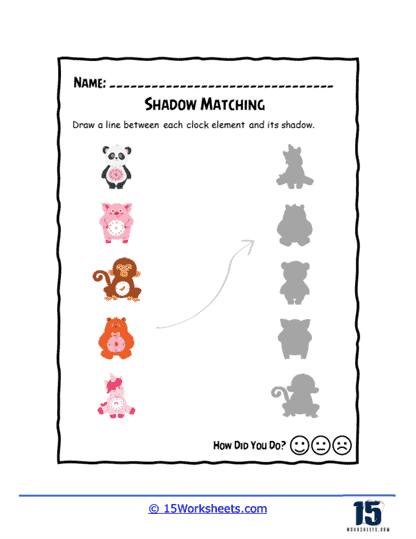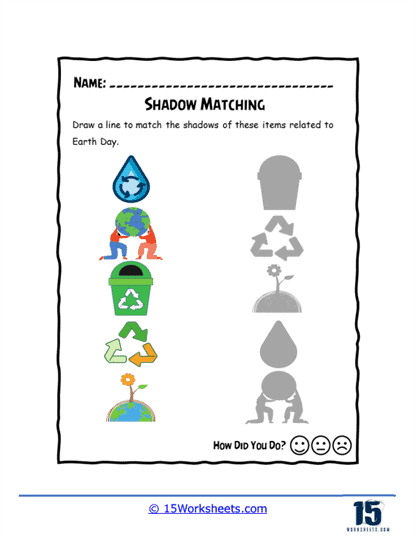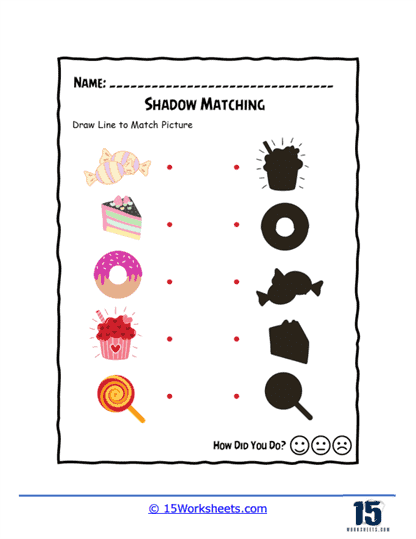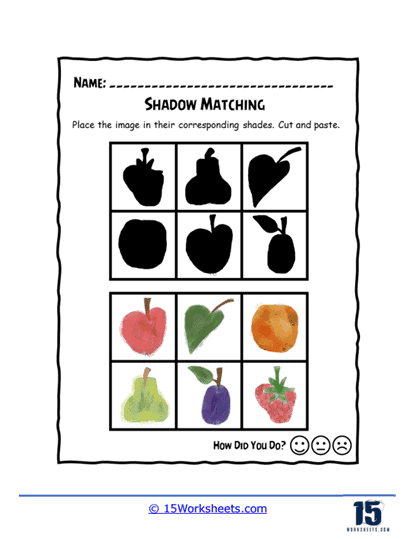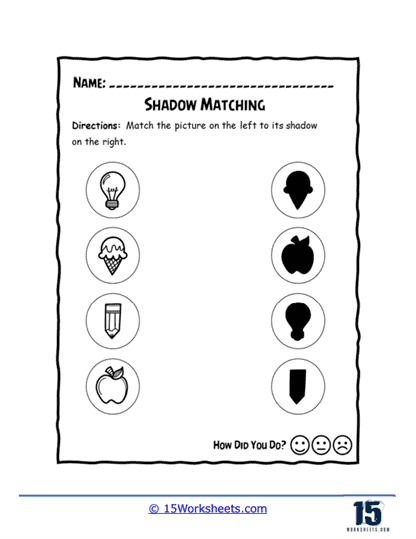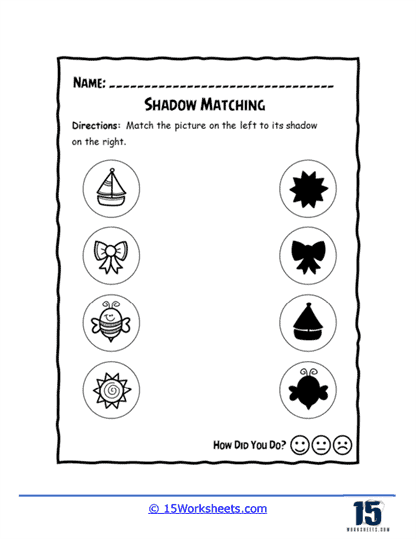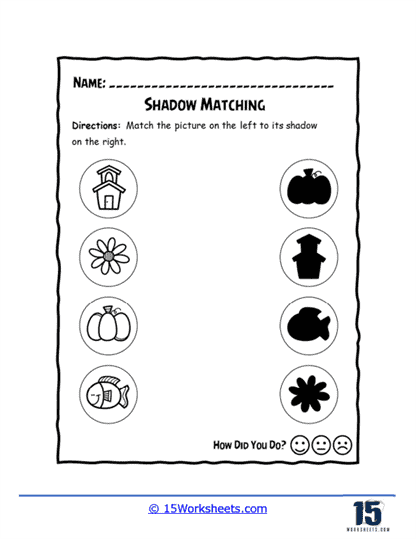Shadow Matching Worksheets
All About These 15 Worksheets
Engage young learners in an exciting exploration of shapes and visual perception with this comprehensive collection of Kindergarten worksheets focused on shadow matching. This series is designed to develop essential skills in shape recognition, visual discrimination, and critical thinking. Through a variety of interactive exercises, students will practice matching objects to their corresponding shadows, honing their observational skills, and strengthening their understanding of shape attributes.
These worksheets also provide opportunities for students to engage in hands-on learning, foster creativity, and promote cognitive development in an enjoyable and engaging way. Through these worksheets, students will:
- Engage in activities that require them to match objects to their corresponding shadows, strengthening their visual discrimination skills and promoting shape recognition;
- Reinforce their understanding of shape attributes and promote fine motor skills;
- And match pictures by drawing lines or doing cut and paste exercises;
Through this engaging series of Shadow Matching worksheets, young learners will develop essential skills in shape recognition, visual discrimination, and critical thinking. By participating in a variety of activities that involve matching objects to their corresponding shadows, students will enhance their observational skills and strengthen their understanding of shape attributes.
These worksheets also provide opportunities for hands-on exploration, problem-solving, and cognitive development. By engaging with these exercises, students will build a strong foundation in visual perception, foster creativity, and develop a love for learning. Ultimately, this collection serves as a stepping stone for future math and spatial reasoning skills, setting the stage for continued academic success and a deeper understanding of the visual world.
What is Shadow Matching?
Shadow matching is a learning activity often used with young children, particularly in preschool and kindergarten settings. It involves matching objects or pictures to their corresponding silhouettes or shadows. The goal of this activity is to help children develop visual discrimination skills, spatial awareness, and problem-solving abilities.
In a shadow matching activity, children are presented with a set of images or objects along with their respective shadows or silhouettes. The shadows may be displayed on cards, worksheets, or even as a digital activity on a screen. Children are then asked to identify the object that matches each shadow or silhouette.
Shadow matching activities can vary in complexity, depending on the age and skill level of the child. For example, simpler activities might involve only a few distinct shapes or objects, while more complex activities could include multiple objects with similar features or overlapping shadows.
Benefits of shadow matching activities include:
- Developing Visual Discrimination Skills – Children learn to identify differences and similarities between objects and their shadows, which is crucial for reading and recognizing shapes, letters, and numbers.
- Enhancing Spatial Awareness – Matching objects to their shadows helps children understand the relationship between two-dimensional representations and three-dimensional objects.
- Improving Problem-solving Abilities – Shadow matching challenges children to analyze and compare different shapes, fostering critical thinking and problem-solving skills.
- Building Concentration and Focus – These activities require children to pay close attention to detail, which helps improve focus and concentration.
- Encouraging Fine Motor Skills – When children manipulate objects or use writing tools to draw lines or circles around matching items, they develop fine motor skills.
Shadow matching activities can be easily adapted to various themes, learning objectives, or children’s interests, making them a versatile and engaging way to support early learning and development.

